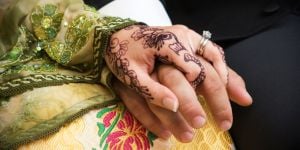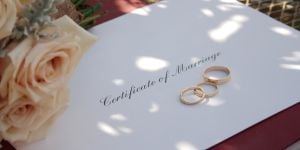
Should you wear suits, jackets and ties, wide-legged jeans, slim-legged jeans, trousers, skirts, and dresses, with or without a plunging neckline, with or without printed patterns, with bright or more neutral colors? The matter of dressing in a foreign country is more important than one would have thought. The host country has its own culture and dress codes, which expats need to follow. How to dress outdoors or for work? Let's discover the appropriate dressing habits for expats to avoid any fashion faux pas.
Dress code, culture, religion and politics
In some countries, clothing can be a matter of politics. For instance, Oman's Criminal Code states that wearing indecent clothing in public can lead to a one-year to three years prison sentence and a fine amounting to 100 to 300 Omani rials (USD 260 to 780). Other Muslim countries also call for a “modest, proper and sober dress code”. In the United Arab Emirates, men and women are invited to dress modestly and soberly. As a matter of fact, Oman is getting tough on that issue. Some time back, on the last day of the Holy month of Ramadan, many foreigners were spotted “indecently” dressed in public places. Like in other Muslim countries, Omani authorities do not require expats to do Ramadan and fasting. Rather, they want foreigners to respect their cultures and traditions.
Much more than being a mere textile fabric, clothes are cultural symbols. In Malaysia, most types of clothing are tolerated. However, be careful not to wear skin-tight or too short clothes (shorts, mini-skirts) or clothing showing too much skin, as a sign of respect to the Muslim community. This measure applies to both men and women. The same rule prevails in Sri Lanka, where it is also not allowed to have an item of clothing concealing the face (law passed in 2019). This measure targets the full-face veil worn by some Muslim women (Sri Lanka has a dominant Buddhist population).
In India, the dress codes are governed by cultural norms rather than legal means. Like in Malaysia, be careful not to wear short garments. It is not culturally acceptable to show one's bare legs. Women should refrain from wearing too revealing clothes or sporting plunging low necklines. Wearing leather garments and accessories is not advisable as some religions won't harm animals – like cows – and show much respect for them. So if you are wearing clothes made of leather, you will be denied access to a temple, for example.
Dress code and individual freedom
Clothing items are often seen as a way to assert one's identity, stand out from the crowd, and be a trendsetter. Some expats will choose to keep their dress style in the name of individual freedom. Countries having a defined dress code do not view restrictive measures as any kind of unbridled attempt at personal freedom but rather as a means to respect the customs of the host country. Going against the established rules in the name of freedom of expression is hence viewed as an offense to the local population.
The dress code issue is by no means an insignificant one. It can rapidly lead to the issue of human rights. In India, for example, dress codes for women are closely linked to their social status. Despite the Indian Constitution guaranteeing gender equality (Section 14), equal opportunity and the preservation of women's dignity (section 16), despite much progress in the legislation concerning abortion (law amended in 2021), the status of women remains a cause for concern. Moreover, sexism and discriminations are closely related to clothing outfits. The situation is much worse in Iran, Pakistan, or Afghanistan, countries which are close neighbors to India.
The professional dress code for expats
What outfit to wear to dazzle colleagues and immediate superiors? The professional outfit is also a matter of culture. One aspect cuts across the different cultures: whatever the country, it is not wise to wear super revealing, ultra-short, low neckline and very flashy clothes in a professional environment. It is better to keep these extravagant clothes for a night out (although it will depend on the country) or private parties.
Professional sexism
In a work environment, women generally wear a suit, while men will opt for a jacket and tie. The heel height of women's shoes is always a hot topic. In Japan, for example, the shoe should look plain, with a heel. It should not be a high heel, though, so women would not look taller than men. In 2019, Takumi Nemoto, then Minister of Labour, justified “professional sexism” in the name of traditions and customs. This caused quite a stir among employees, giving birth to the “#KuToo” movement, a close reference to the #MeToo movement. #KuToo is a Japanese pun made from the contractions of “kutsu” (shoes) and “kutsuu” (pain). In 2017, the Canadian province of British Columbia created a buzz when it proposed legislation against employers imposing a dress code on their employees.
It is a fact that women are the main targets of the rules and regulations linked to the professional dress code. For example, wearing trousers is solely reserved for men in some cultures and religions. Women, by contrast, are limited to wearing knee-length or full-length skirts or some rather plain or neutral-colored dress. These traditional clothing codes have found their place in many professional sectors. Hence, women's uniforms (like in the food service sector) are more revealing, shorter and have deeper low necklines than their masculine equivalents.
Decision-making positions, dress code and sexism
Sexism is also present at the highest hierarchy of the State, which is paradoxical as the State is supposed to protect our rights without fear or favor. In France, for example, the “floral dress affair” will be remembered for quite a long time. On July 17, 2012, Cécile Duflot, the then Minister of Housing, made a speech at the National Assembly draped in a dress with blue floral patterns. Members of Parliament wolf-whistled her, she was mocked, and controversial innuendos could be heard. Patrick Balkany, a right-wing MP, said in a statement to “Le Figaro”: “Maybe she put on that dress to distract us from what she was saying”. It was safe to assume at that time that for some French politicians, a dress – which is a welcome change from the traditional attire of trousers and suit – could be perceived as too ultra-feminine and not in line with the world of politics. Reacting to those outbursts, Cécile Duflot voiced out her utter surprise and regretted that male chauvinism was still very much alive.
Even in 2023, the clothing attires of female politicians receive more comments (and criticisms) than those of their male counterparts. The same can be said in the professional environment of large companies and decision-making positions. Some women will consciously try to add a masculine touch to their professional attires in an effort to look more credible (this was the tendency in the years 90-2000). For the last few years, movements like #Metoo have also released women from established patriarchal constraints. Women occupying decision-making positions are no longer afraid to proclaim their femininity proudly.
Dress code and choice of colors
How about adding colors to your life? Bright, flashy colors should be avoided when wearing a jacket and tie or a suit. Navy blue is a more appropriate color, as are grey or black tones. In France, brown and its derivatives are also acceptable professionally; the same go for pinstripe designs and stylish motifs. Men and women are quite free to choose their outfits, and they can opt for bright colors, like rose or orange. Of course, all this will depend on the professional environment and the company. One should not be limited by the Western attire of a jacket and tie or feminine suit.
In sub-Saharan Africa, the suit has short sleeves and comes in different styles. The abacost (literally ‘down with the suit') is one of the best-known examples. It was a clothing doctrine imposed by Mobutu Sese Seko, President of the Democratic Republic of Congo (ex-Zaire), from 1972 to 1990. Mobutu banned the traditional Western working suit, which he considered a colonial vestige. Although the ban on Western office wear has been lifted, the abacost is still very much in demand. It has an easily recognizable style (suit with no collar, very light cloth) and portrays African elegance at its best. The cut of the fabric, its materials, and its colors have blended with the hot climate. While Africa still loves dark colors, much lighter ones are also welcomed. Depending on the professional environment, one can also wear traditional African cloth (like bogolan, kente, raffia…), wax, or the bazin, which have a much larger array of colors, motifs and forms. Women are even freer, with choices between African-style suits, dresses and other costumes with elegant and bright patterns.
The dress code when working abroad: a mixture of elegance and observation
“To be elegant”. This is the secret behind a closet filled with professional garments. In China, the workplace asks for a “sober and posh” attire. In Italy or France, professional clothing must be “sober and refined”—very cultural sobriety. For instance, working attire worn in French companies will be frowned upon and judged too flashy in Japanese companies. Elegance is synonymous with a fine cut of cloth, the excellent quality of the garment material, and the ironing process! Regardless of the country you are in, a crumpled suit looks very bad and sends the wrong message.
In countries with high humidity levels, it is advisable to have several tops at hand during the heat of the summer days. In Japan or the USA, “culture” plays a tough game on women, who may be forced to keep their tights on even in hot weather.
But in all cases, it is also a matter of observation. What is the prevailing culture in the host country? How do people dress for work or in the streets? Can you easily spot the salaried employees (like the Japanese salarymen wearing white shirts and dark suits)? Are there popular colors? What is the absolute no-no? What are the different dress styles in the professional circle? Is the combination of jacket and tie/suit/sneakers accepted? Is the tie compulsory? Can one opt for a more casual and relaxed look?
You will only be able to adopt the correct dress code by observing your coworkers. Individual freedom will have a more or less large space to express itself depending on the countries, their cultures, and the types of their businesses. Personal freedom will be best expressed in town while respecting the local culture. There will always be room for originality and personality to express themselves. Like always, life is a balance!



















